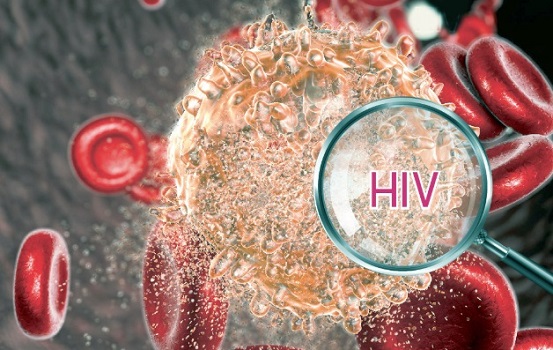Elevated Growth Differentiation Factor 15 May Hold Answers for HIV Neurocognitive Decline
Nikhil Prasad Fact checked by:Thailand Medical News Team Jan 11, 2025 9 months, 3 weeks, 1 day, 4 hours, 50 minutes ago
HIV News: A groundbreaking pilot study has unveiled a potential biomarker, Growth Differentiation Factor 15 (GDF15), linked to the neurocognitive challenges faced by individuals living with HIV. Researchers from the University of California, San Diego-USA, spearheaded this investigation to understand how HIV impacts brain function even in the era of advanced antiretroviral therapy (ART).
 Elevated Growth Differentiation Factor 15 May Hold Answers for HIV Neurocognitive Decline
Elevated Growth Differentiation Factor 15 May Hold Answers for HIV Neurocognitive Decline
HIV-associated neurocognitive impairment (NCI) remains a persistent challenge for those living with the virus. Despite ART effectively suppressing viral loads, many individuals still experience cognitive issues that range from mild forgetfulness to severe dementia-like symptoms. This
HIV News report delves into the study’s findings, highlighting the potential of GDF15 as a biomarker for early detection and management of HIV-associated NCI.
The Study at a Glance
Researchers analyzed samples from two distinct cohorts of people living with HIV, stratified based on cognitive health. They examined cerebrospinal fluid (CSF) and brain tissues from participants, comparing GDF15 levels in those with HIV-associated NCI to those without. The participants - largely male with a mean age of 40.5 years - underwent neuropsychological testing before their deaths, with results indicating significant differences in GDF15 levels between the groups.
This article sheds light on the implications of these findings, which were made possible through advanced methodologies like immunoblotting, immunohistochemistry, and enzyme-linked immunosorbent assays (ELISA). The researchers hope these insights will pave the way for more effective diagnostic tools and treatments.
What is GDF15?
Growth Differentiation Factor 15 is a protein known for its role in inflammatory and metabolic stress responses. While it has been extensively studied in conditions like Alzheimer’s disease and multiple sclerosis, its relationship with HIV-associated NCI is a relatively new area of focus. The protein’s ability to modulate immune responses and facilitate tissue adaptation positions it as a promising candidate for further exploration in the context of HIV.
Key Findings of the Study
The research revealed several pivotal insights:
-Elevated GDF15 Levels in HIV-Associated NCI: Individuals with HIV-associated NCI displayed markedly higher levels of GDF15 in their brain tissues compared to those without cognitive impairment. Particularly, the frontal cortex showed a significant increase, with GDF15 levels approximately doubling in cases of HIV-associated dementia (HAD).
-Localization of GDF15 in Brain Cells: Immunohistochemical analysis highlighted that GDF15 expression was primarily localized to microglia, neurons, and astrocytes. Microglial cells, the brain’s immune responders, exhibited the most pronounced increas
e in GDF15 levels, especially in severe cases like HAD. Neurons and astrocytes also showed elevated GDF15 expression, albeit to a lesser degree.
-
Gray Matter vs. White Matter: GDF15 levels were significantly higher in the gray matter of the frontal cortex, with a more moderate increase observed in the white matter. This spatial distribution aligns with the known patterns of neuroinflammation associated with HIV.
-CSF GDF15 Levels: Although cerebrospinal fluid levels of GDF15 did not show statistically significant differences across groups, effect size analysis suggested a moderate trend of increase in those with cognitive impairment. This indicates potential utility as part of a broader biomarker panel.
Implications for Diagnosis and Treatment
The findings highlight GDF15’s potential as a biomarker for early detection of HIV-associated NCI. Current diagnostic approaches, which rely heavily on time-intensive neuropsychological testing, could be complemented by a blood or CSF test for GDF15 levels. This would provide a quicker, less invasive method to identify individuals at risk of cognitive decline.
Furthermore, understanding GDF15’s role in neuroinflammation opens new avenues for therapeutic intervention. By targeting pathways associated with this protein, researchers may develop treatments to mitigate the effects of chronic inflammation on the brain, potentially improving the quality of life for people living with HIV.
Study Limitations and Future Directions
While the study offers promising insights, it also underscores the need for further research. Limitations include the relatively small sample size and the cross-sectional nature of the data, which makes it challenging to determine causality.
Additionally, most participants were from the pre-ART era, raising questions about the applicability of findings to contemporary cohorts with effective viral suppression.
Future research should focus on:
-Longitudinal studies to track GDF15 levels over time and establish its predictive value for cognitive decline.
-Exploring sex-specific differences in GDF15 expression and its implications.
Investigating the interplay between GDF15 and other biomarkers to create a comprehensive diagnostic panel.
-Evaluating GDF15 levels in more accessible biospecimens, such as plasma, to facilitate widespread clinical application.
-Mechanistic studies to understand how GDF15 interacts with HIV and ART-related factors in the brain.
Conclusion
This study represents a significant step forward in understanding the complex interplay between HIV, inflammation, and neurocognitive health. By identifying GDF15 as a key player in this process, researchers have opened the door to new possibilities for diagnosis and treatment. While challenges remain, the potential to improve outcomes for individuals living with HIV-associated NCI is a compelling motivator for continued exploration.
The study findings were published in the peer-reviewed journal: Brain Sciences.
https://www.mdpi.com/2076-3425/15/1/49
For the latest
HIV News, keep on logging to Thailand Medical News.
Read Also:
https://www.thailandmedical.news/news/new-hope-for-fighting-hiv-from-a-natural-plant-source
https://www.thailandmedical.news/news/new-insights-of-bone-health-in-hiv
https://www.thailandmedical.news/articles/hiv-aids
